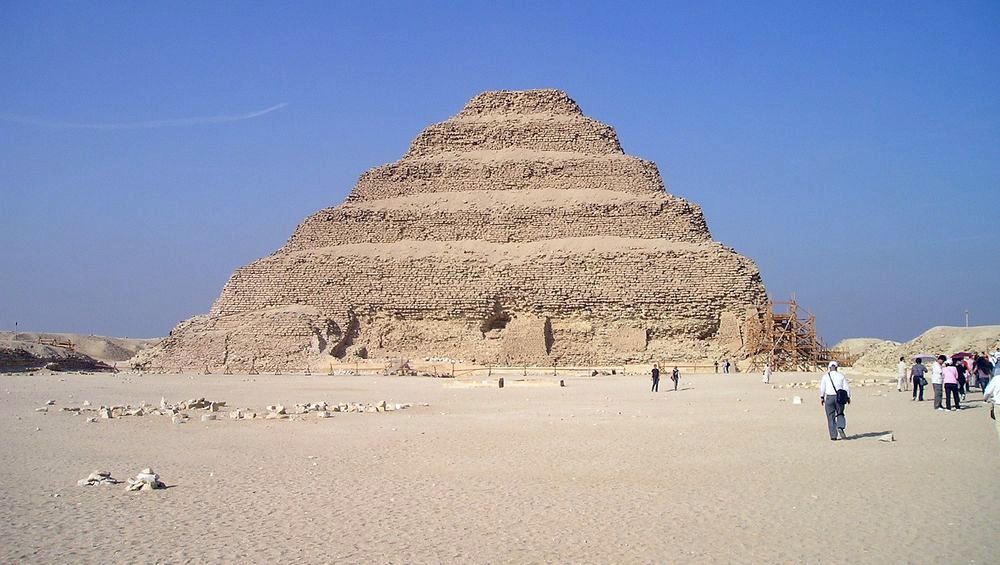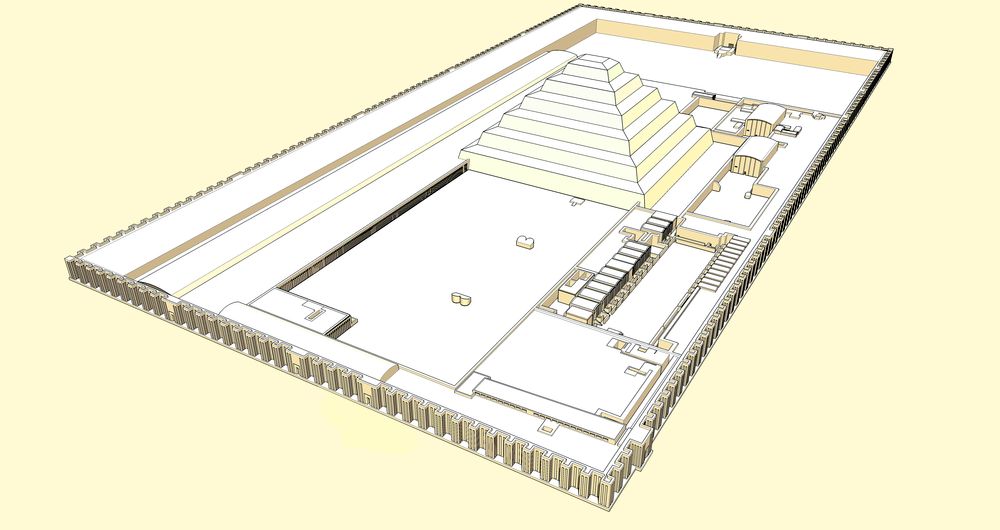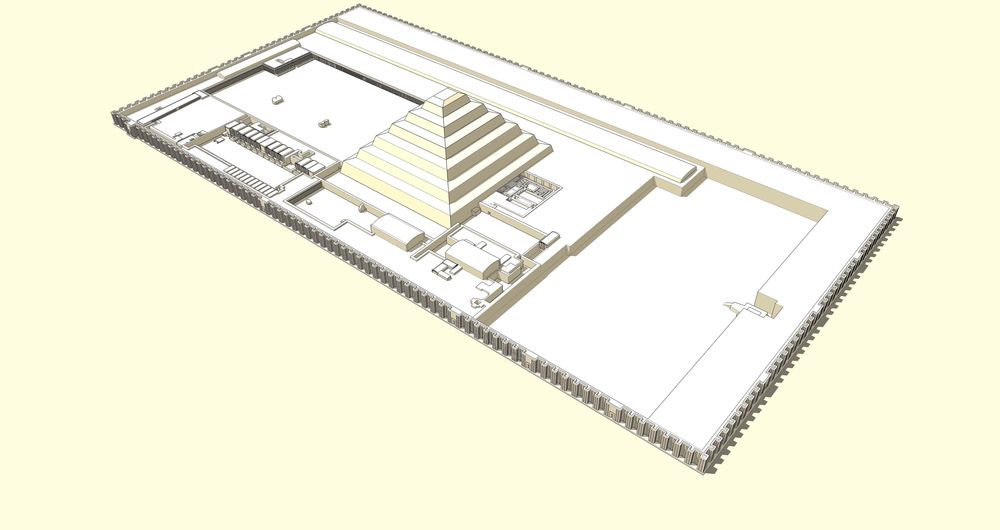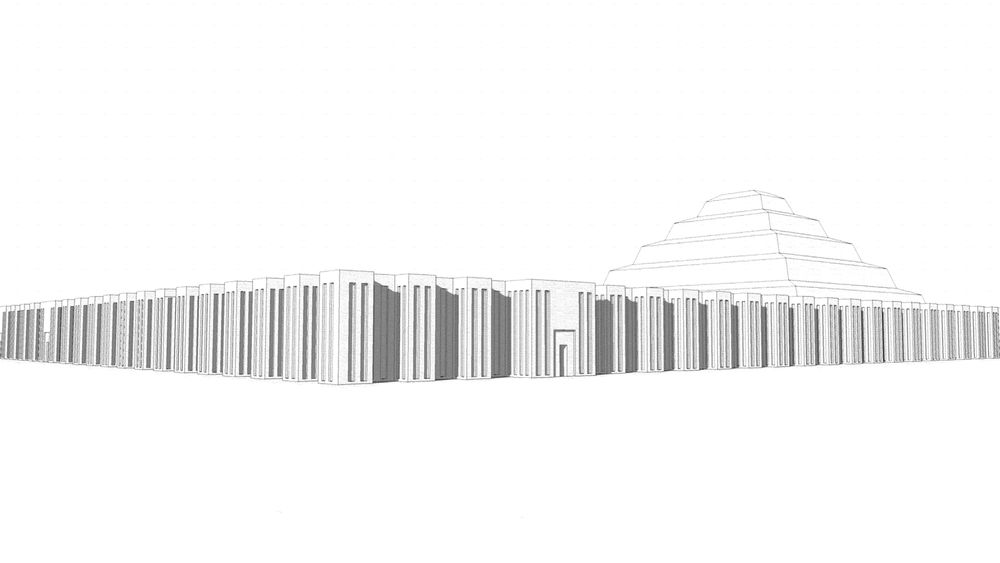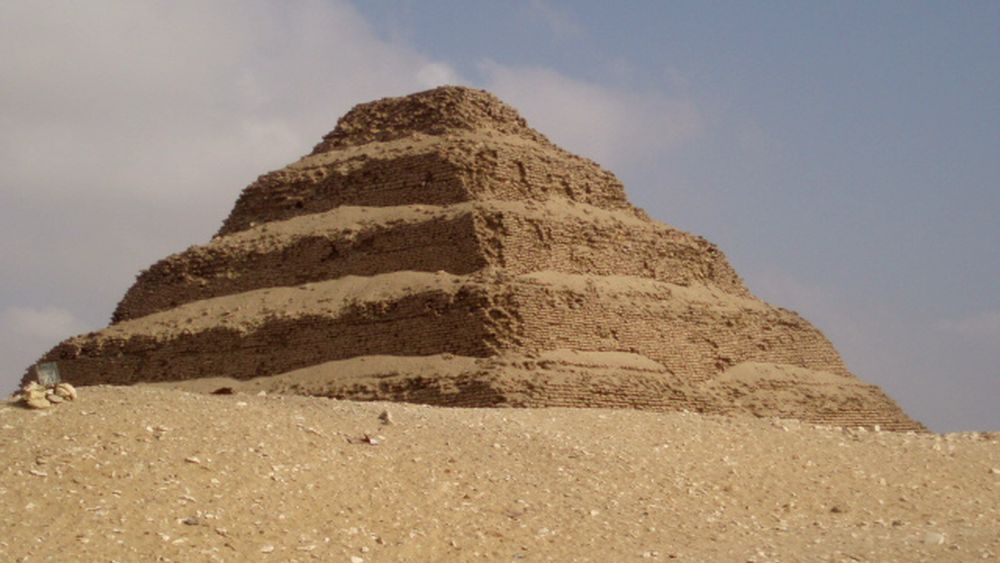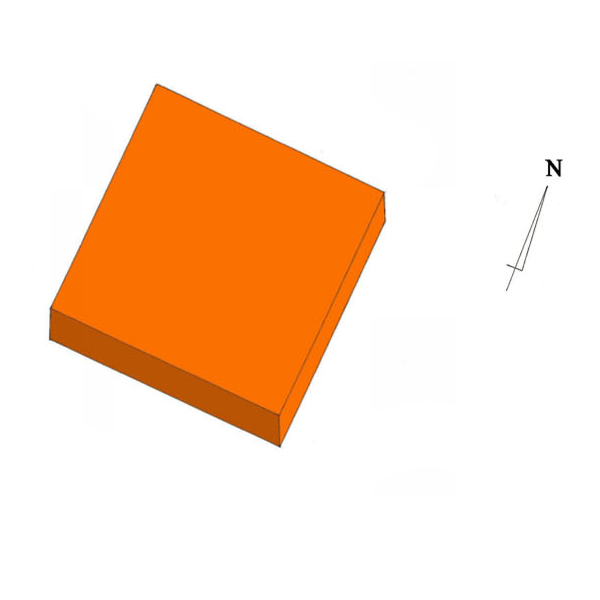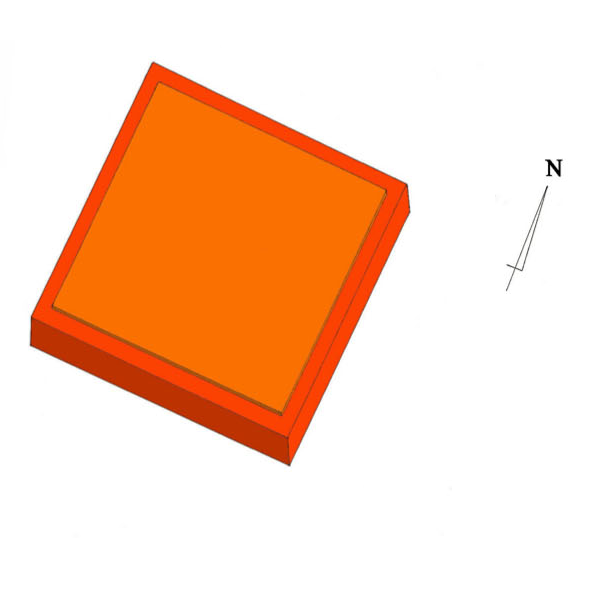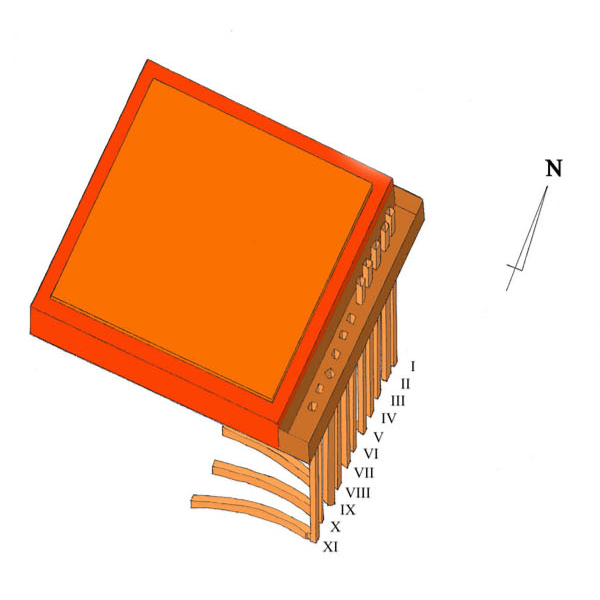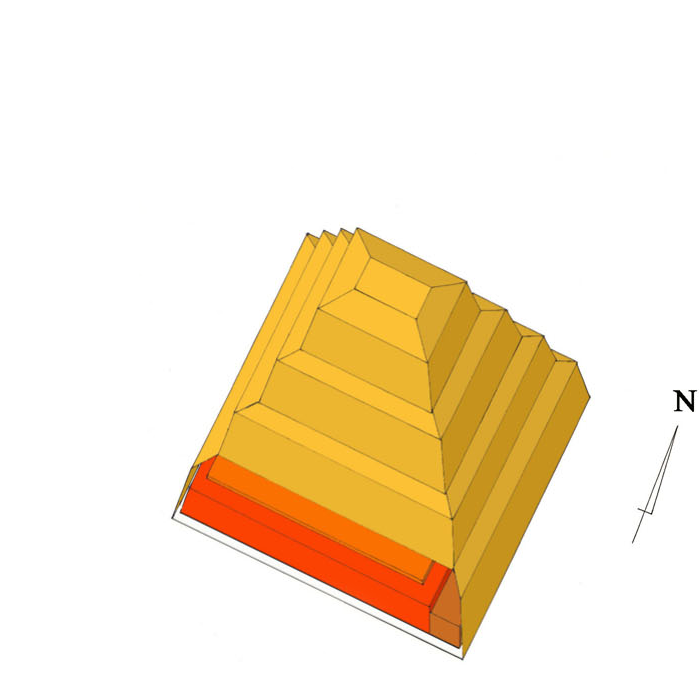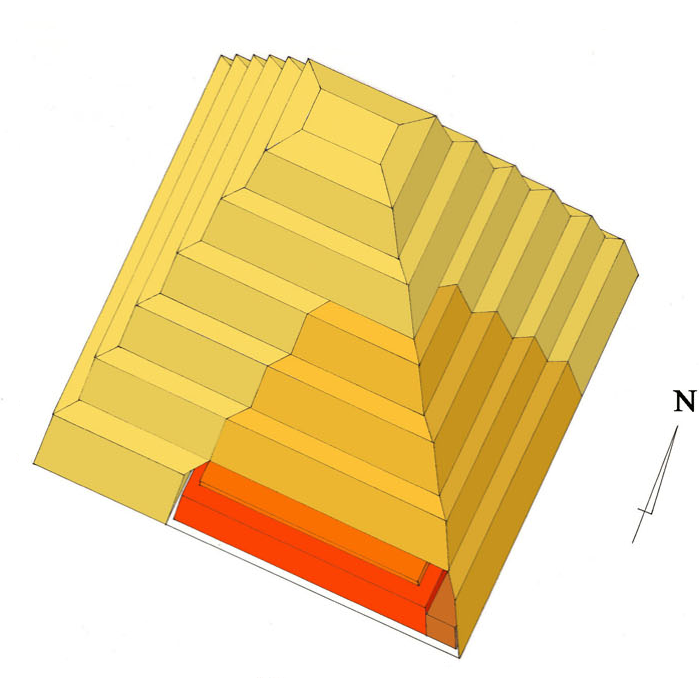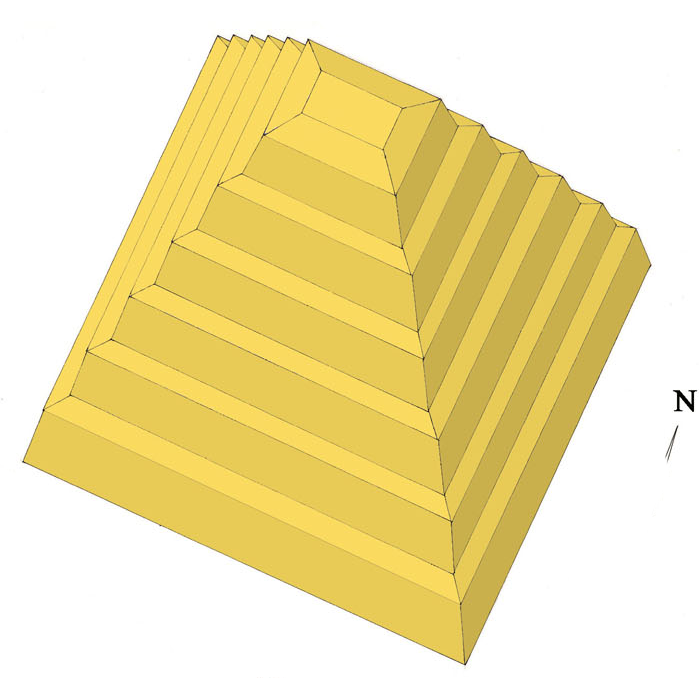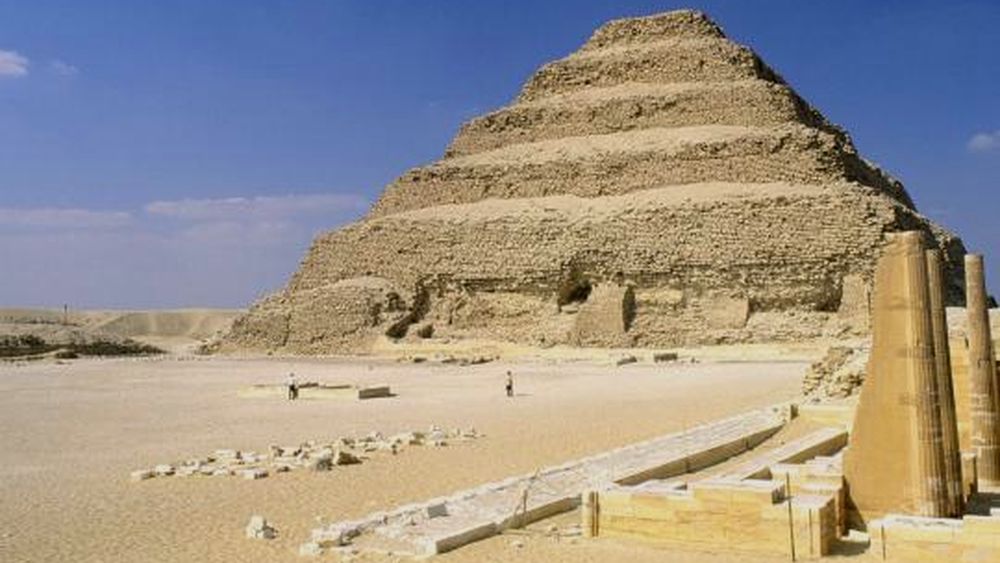The pyramid of Djoser is one of the many monumental pyramids built during ancient Egyptian times. It has several characteristics that make it unique among all others: Not only is it the very first pyramid that was built in the history of Egyptian civilization, but it is also one of the few step pyramids still to be visible nowadays, the others having collapsed in the meantime.
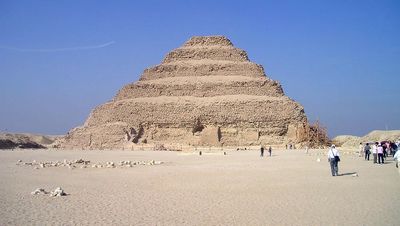
Pyramid of Djoser
What we usually do not know is that it is only a small part of a very large funeral complex of which it is only the main element. She shares this aspect of things with the Taj Mahal, of which only the white marble mausoleum is known when it comes to a funeral complex very complete. But where the Indian monument is relatively recent, since built in the seventeenth century, the pyramid of Djoser dates from the early twenty-seventh century BC, a time during which construction techniques were much more limited.
And yet Djoser, or Djeser, as it is sometimes spelled, has indeed received the first pyramidal monument in the history of mankind.
Learn more about the pharaoh Djoser.
Context
Historical context
The pyramid of Djoser was built before 2600 BC by Imhotep, great administrator of pharaoh Djoser and priest. It is in the necropolis of Saqqara, the main necropolis of the ancient empire.
It was built thanks to a period of economic prosperity and stability of the Egyptian civilization, but also thanks to the discoveries made in architecture: the cut stone.
Learn more about the context of construction of the pyramid of Djoser.
Overview
The pyramid of Djoser is only a simple element of a large funerary ensemble. From a general point of view, it is included in a large rectangle oriented along the 4 cardinal points surrounded by a high wall. Two courtyards stand out, one large in the South and one smaller in the North, a separate tomb, a temple, chapels, galleries with many rooms, open-air altars, an entrance and its long colonnade, etc.
Below are two views of the complex as it once was.
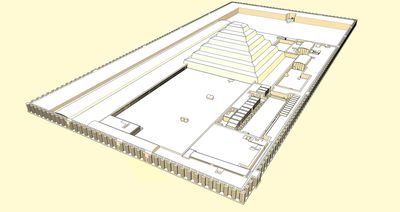
Diagram of Djoser Funeral Complex
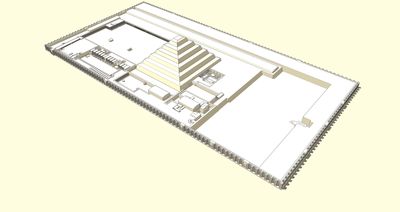
Diagram of Djoser Funeral Complex
If we look in detail, we are in the presence of a large number of buildings. First, a rectangular enclosure, 544 x 277m and a height of more than 10m. Fortified wall of protection, it was surrounded, much further than at the feet of the wall, of a wide ditch of 45m equipped with a gallery of escarpie. Moreover this area left between the wall and the ditch was used for the construction of the pyramids of Ounas and Uskakaf, of the 5th dynasty.
The enclosure has a single entrance leading to a covered colonnade, the end of which overlooks the southern courtyard, the largest. It provides access to the South Tomb, "T Temple" and Chapels of the Sed Festival, important buildings detailed below. In the center of the complex stands the pyramid, of course, it is she who separates the 4 sectors of the monument. Thus to the west of the pyramid is a huge massive dug many rooms, in the East there is the so-called "South pavilions" and "North Pavilions" and north of the complex, there to another, smaller courtyard, from which one can go to the funerary temple and the "serdab". It is also in the North that there are other galleries, in another massif.
Details
Fortified enclosure
What marks when one arrives on the spot is obviously the imposing step pyramid, but it must be admitted that the enclosure of the funerary complex of Djoser is impressive, for what remains of it. It is a real monument in itself and would deserve the visit, just for her.
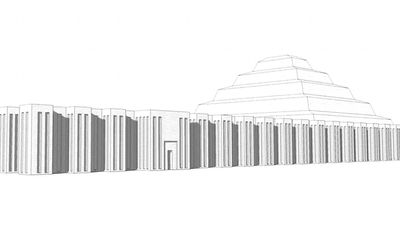
Fortified enclosure
This is an enclosure with steps. This means that the wall is not rectilinear, it is made of small portions offset in the direction of the depth, these portions taking different sizes according to their locations. The largest are decorated with a false door whose symbolic meaning eludes us, there are 14, plus one fifteenth, real this one. This is the only entrance to the complex. The rampart wall was fortified, it was equipped with 211 bastions and a walkway. In this it is close to what was built nearly 4000 years later, in a much more modest style (but a little more efficient: the tour of London , which was also equipped with a wall and regular bastions.
The exterior decorations of the perimeter wall were of Thinite inspiration, that is to say, they had the same style as what was done during the First and Second Dynasties. These are extrudations of the flat facade, shallow and rectangular. Nowadays, the style is reminiscent of basic art deco.
The entire complex was surrounded by a 45m wide ditch and the depth ... still unknown, excavations not yet completed. These excavations uncovered architectural elements such as a escarp gallery, proving that the moat was not a moat.
Entry
The entrance of the complex is unique, it measures only a small meter wide or approximately 3 high, without any flourish. There is no door, either, and is under one of the 211 bastions, of course. It is located at the southeast corner of the enclosure and gives, internally, in a corridor of about twenty meters and 6.60 high. This corridor was decorated with 20 half-columns protruding from the walls, 10 per side. At the end of the corridor, opened the large South courtyard.
Pyramid
Description
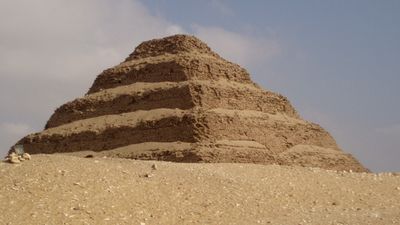
Pyramid of Djoser
Djoser's pyramid is the emblem of the funerary complex of Djoser. It has 6 regular floors. The overall inclination is 84 ° and its base is 121 x 109m. It is 62m high, and at the time it was the highest construction ever made by man. It was made possible thanks to two elements that arrived concomitantly: The invention of the cut stone, which replaced the raw wood-bricks mixture, much more fragile, and the economic prosperity, which allowed the stability of the Egyptian civilization and therefore obtaining a qualified workforce available in large numbers.
To build it, the builders used limestone stones of different size depending on what was built. As explained below, the pyramid was made in stages. All the construction of the mastabas was done with stones of 30cm of height. When they built the first pyramid, they increased the size of stones to 38cm, while the last two pyramids were made with larger stones, 52cm in height.
Evolution
The pyramid was not built as it was from the beginning, its final form is the result of a series of improvements.
Initially, Imhotep built a mastaba, as was the custom during the First and Second Dynasties. Djoser, the first pharaoh of the Third Dynasty, could follow this tradition, but several ideas resulted in a tomb of a new style that will be school, the famous pyramid.
Archaeologists use codes to describe the different states of the pyramid over time. There were 3 mastabas, then 3 pyramids. The 3 mastabas are called M1, M2 and M3 and the 3 pyramids p.1, p.2 and p.3.
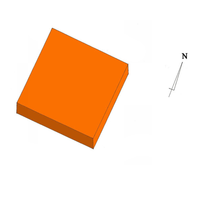
Mastaba M1
The mastaba M1 was the original tomb of Djoser. Entirely made of stone, a novelty for the time, it had its relatively modest dimensions for a pharaoh (63 x 63 x 8m). It was in the center of the funeral complex that included all the other buildings, quite normally.
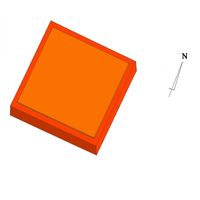
Mastaba M2
The mastaba M2 is the result of the first modification, it was to extend the mastaba M1 by adding massive on the 4 sides, massive slightly lower than the original building. The set measured 71.5 x 71.5 x 8m, with additions measuring only 7m high.
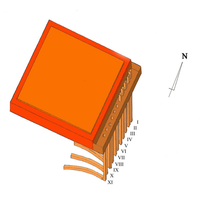
Mastaba M3
The mastaba M3 marks a change in the structure of the building. It was enlarged on the east side by another massif serving as a starting point for 11 wells of variable depth, the deepest of which still reaches 33m. They all overlook a gallery of about twenty meters. The northern five were used for the burial of the royal family, they were looted during antiquity, but the other six were still inviolate when modern archaeologists were able to open them. They discovered some dishes of the first and second dynasties, in large quantities. This new mastaba measured 79.5 x 71.5 x 8m, the addition being only 5m high.
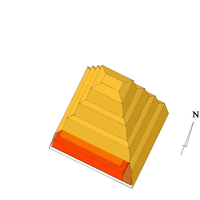
Pyramid P1
The pyramid P1 completely encompasses the mastaba M3 which is covered by the first degree of the pyramid which then counts 4. From a base of 85.5 x 77m and 42m high, its shape symbolizes the grand staircase that allows the pharaoh to climb towards the divine world.
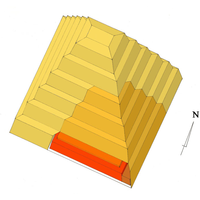
Pyramid P1'
The pyramid P1' is an approach to the final pyramid, it adds the 2 degrees that we know today for a dimension of 119x107m and 60m high.
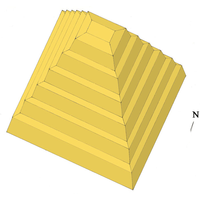
Pyramid P2
The pyramid P2 is the one we know nowadays, it is a slight addition of the P1 '. It goes to its final dimensions of 121x107m on 62m high, an extension that is only 2m only as well in its width as its length and height.
Galleries
Like most Pharaonic pyramids, that of Djoser has a network of underground galleries. The peculiarity here is that this network is quite complex and has been dug at different times.
To put it simply, we must distinguish:
- The 11 galleries of M3 mastaba
- The central well and its network
- The subsequent galleries
The 11 galleries of the mastaba 3 leave wells regularly dug under the addition that was made to build the mastaba 3. These are uniform wells whose deepest reaches 33m. They all go west but are not perfectly parallel, they seem to avoid the royal well, central compared to the future pyramid.
The central well was dug in the center of the pyramid. It measures 7m side and hosts, in the background, the royal sarcophagus ... alas discovered empty. It could be reached by a descent whose entrance is at the first step of the pyramid, on its north face. This entrance is lined with another but late period, at least after the construction of the complex, and that gives in the temple, not on one side of the pyramid.
From the bottom of the well also leave several galleries that are three-quarters of a turn, a few meters from the well itself. They serve the funeral apartments, including three blue rooms, so called because beautiful blue faience found on site.
The later galleries were dug at various times. The first date back to the Saite era. It seems that at that time the vault of the well threatened to collapse, the Egyptians of the time built a gallery leading from the South Court to the top of the well. By extruding the well they could use the stones to strengthen the vault and thus avoid the accident. A second gallery faces him, it dates from the Roman era and arrived at the top of the well. The interest of this new tunnel was to send large wooden beams to the top of the well to reinforce, once again, the vault.
But these are not the only tunnels dug later: Nowadays archaeologists have identified many galleries that were only drilled to try to discover hidden rooms.
The funerary temple
The funerary temple is a classical building of the tombs of the pharaohs of the ancient empire, it was intended to prepare the body of the pharaoh after his death. We find these temples in all the burials of the time, but that of Djoser is particular insofar as it is located along the North face, usually, it is on the East face.
The internal structure of the temple revolves around two inner courtyards, one to the east and the other to the west, and a long corridor that follows the north exterior wall and allowing visitors to entrance, to the east, to the rooms (via a small antechamber) which served for the worship of the Pharaoh. These two chambers represented Upper and Lower Egypt.
Note the presence in the West courtyard of access to the underground galleries that go under the pyramid.
South Court
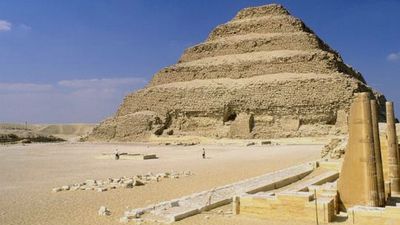
South Court
The South Court is the largest of the two courts. It leads to the colonnade leading to the door. It has in its center two curious altars in the form of letter B, inclined and measuring the trifling 11m long. Their duties are unknown, but they can be associated with the Sed party. The Sed festival was the jubilee of the pharaoh, which began to celebrate from 30 years of reign. The courtyard also has another altar, attached to the south face of the pyramid. There is a vault right in front, of modest size.
The south wall of the courtyard is home to two buildings. A tomb with a rounded roof whose burial chamber is buried at the end of a long descending corridor, and an adjoining temple from which the corridor descends. The underground corridors continue to three stores and adjoining rooms in which archaeologists have found remains of offerings.
East of the courtyard are three groups of buildings:
- The temple T
- Chapels of the Heb-Sed festival
- The offering rooms
These are buildings related to the beliefs of the time. After his passage to his new life (his death, for us), the Pharaoh could continue to celebrate the Heb-Sed thanks to these structures. The temple T was destined to make the necessary changes between the different rites, all that symbolically of course, since we were after the death of Pharaoh.
The North Court
The North Court is larger than the South Court, but it is the only area of the funeral complex that has not been completed. It allows access to the Serdab as well as galleries and shops in the North.
The courtyard also hosts a large altar (15x15m) directly carved in the rock but whose siding is not completed. It was probably used to receive the offerings that were stored in the stores of North, just behind the altar. Also right next to the altar is a well leading to a long gallery that could have served as a grain and fruit warehouse.
The rest of the North Court has no particular constructions, which suggests that the complex was not finished. On the contrary, the builders dumped there a great quantity of rubble resulting from the different constructions around.
The serdab is a small room next to the north side of the pyramid and the temple. Opened by two small round openings on the temple, it contained a life-size statue of Djoser. It seems that a second serdab had been built, with the remains of a second statue found, but this is currently only a hypothesis.
Other buildings
There are still other buildings not yet explained in this funeral complex. The North and South pavilions, for example, are two wooden buildings with rounded roofs and decorated with columns with carved capitals. In the South Pavilion there was a small L-shaped chapel. The usefulness of these pavilions is unknown at the moment, but it is possible that the discovery of two nearby wells will allow to know their goals soon.
The last building is also the most imposing, it is about the three massifs which take all the west side of the complex. Decreasing in size, approaching the pyramid, they remain largely unexplored to this day. Only the middle one, 3m high and 25 wide, showed the presence of a network of galleries serving many wells at the bottom of which were different rooms. For the moment, we do not have explanations about their utilities but we found a human skeleton.
Recent damage and renovations
Except for the many interventions of antiquity to strengthen the vault of the well, the main damage received by the pyramid of Djoser are recent, they date from 1992 and 2008.
On October 12, 1992, a major earthquake occurred in Egypt. Its epicenter was 50 km south-west of Cairo, causing significant damage. The human toll was heavy, with approximately 150 deaths. In addition, many houses were destroyed (350 houses and buildings, most of them dilapidated, collapsed), causing a large number of homeless people.
But if these damages were dramatic, the ancient heritage is also degraded. Thus the pyramid of Djoser undergoes the tremor by the collapse of the vault of the great funerary well, as well as the ceilings of several underground galleries that could collapse. In addition tons of stones had collapsed from the external structure. It was therefore necessary to act, and quickly.
To repair the damage two actions were undertaken. First of all, a local company was asked to repair the most visible damage, but according to many experts the result was catastrophic. The company in question, Egyptian, was not specialized in the restoration of ancient monuments, it was rather a traditional masonry company working on the old sites to build modern buildings. The choices they made degraded the pyramid, to the point that part of the structure collapsed, threatening to collapse the entire building. A wall was built, but it brought extra pressure that the pyramid could not stand.
Local associations fought to remove the worksite from the company, which stopped itself because of a lack of funding. Still, the choice of the company has had political repercussions that go beyond the restoration of the monument, making the case delicate.
In parallel, a safeguarding mission was commissioned by the Supreme Council of Egyptian Antiquities, the body in charge of ensuring the perenniality of ancient historical monuments. This mission is led by the French architect Bruno Deslandes, it is Latvian and has allowed not only to reinforce the underground galleries and the replacement of the vault structure of the main funerary well, but also to discover new galleries.
Explorations
Studies of Jean-Philippe Lauer
Jean-Philippe Lauer was a 20th century French Egyptologist who devoted much of his life to the study and reconstruction of the funerary complex of Djoser.
Among his main works, apart from the study and documentation of the site, he is the inventor of the blue ceramic chamber, which is underground, in the middle of the underground galleries. He is also the one who has rebuilt the ramparts, which allows us to see it nowadays, and the temple near the gateway to the site.
Lauer is the co-founder of the French archaeological mission of Saqqara and the creator of Imhotep museum, at Saqqara.
The Latvian Mission
The so-called Latvian Mission is an expedition funded by Latvia and led by Frenchman Bruno Deslandes. It took place from 2005 to 2007 and aimed at precise mapping of the monument to carry out renovation operations following the damage suffered by the pyramid during the 1992 earthquake.
If one gives such an interest to this simple survey mission it is because it allowed the discovery of several unknown galleries until now, proving that the exploration of an Egyptian monument, as strong as it is not possible to define a definitive end.
The discoveries were:
- Two galleries joining the escarp of the big ditch to the galleries III and IV of the mastaba 3. That of the gallery IV goes through a cave
- Two wells near the North and South pavilions
- A gallery linking the network under the pyramid to that of the southern tomb
The mission also made it possible to study the Saïte gallery as well as to discover the Roman origin of the second gallery leading to the top of the well.
Karl Richard Lepsius
Karl Richard Lepsius was a nineteenth-century German archaeologist. Formed by Jean-Antoine Latone, one of Champollion's students, he participated in numerous excavations and classifications of Egyptian archaeological sites. He is in particular at the origin of a list of the pyramids of Egypt, to which he gave a unique number to be able to distinguish them simply. Even today the official lists report the pyramid of Lepsius No. 25 or No. 50, for example.
If Lepsius worked on most Egyptian sites, in Saqqara he visited the Step Pyramid of Djoser and demolished the lintels and posts of a door where the name of Pharaoh Neterikhet Djoser appears. Lepsius is not the archaeologist who has worked the most on this pyramid, but his participation is obvious.
Previous explorations
There is little evidence of the various explorations of the Djoser pyramid before the modern era. We know that the vault was looted in antiquity, and that the Romans regularly accessed the underground galleries, so we imagine that the first attempts to map the pyramid were made very early, but we do not keep any traces.
Similarly, we do not know about the Arabs trying to explore the pyramid of Djoser. This would be possible because they did it for the pyramid of Khufu, going as far as digging a new gallery to try to discover a hidden room.
Tour
Since the funerary complex of Djoser is by far the most important monument of the necropolis of Saqqara, it is to him that the tourists are mainly turned. who come to discover his pyramid. A fairly traditional circuit has been designed to direct the flow of tourists to the most interesting points of the site.
Learn more about the tour of the pyramid of Djoser.






